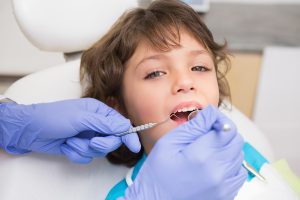1. Scaling to remove calculus & stains.
It is not always possible to remove dental plaque and calculus (tartar) only through brushing. This is when a dentist will perform dental scaling, either through the use of manual instruments or ultrasonic instruments. Cleaning will be done below the gum line to remove buildup, which is why it is often called deep cleaning.
2. Dental fillings for decayed teeth with cements.
Dental Filling is a treatment modality to restore missing tooth structure which could have been a result of decay or trauma. Decay makes tooth hollow. Dental Filling helps to fill this gap and protect it from further decay. A filling is also used to repair broken or cracked tooth and the teeth which wear off due to dental habits like teeth grinding, nail biting etc
There are various signs and symptoms where fillings can be required. The symptoms could be as below:
- A hole in your tooth
- Dark spots on the tooth
- Food stuck between certain areas of the teeth
- Chipped or broken tooth
- Sensitivity to hot and cold food and beverage
- Single or multiple cavities
If you come across any of the symptoms as mentioned above, then there is a chance that you need a filling. The final decision will be of your dentist after a thorough oral examination.
Cements are of two types
a) GIC
b) Composite
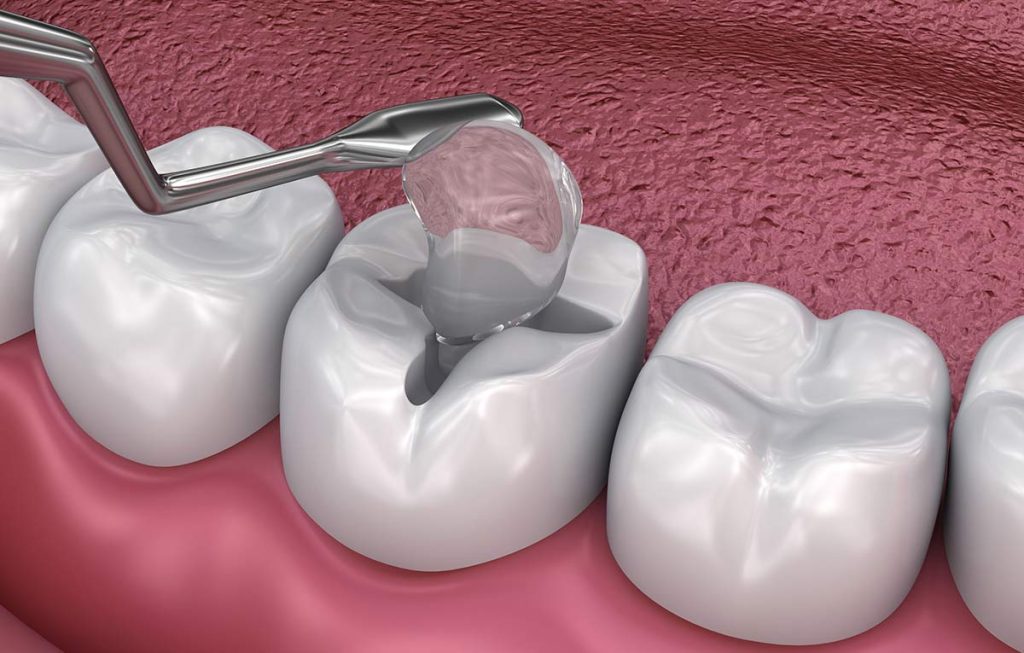
3. Braces & Aligners to treat people who want their teeth corrected.
Orthodontic treatment involves the use of Dental braces or Ortho braces to help correct the position of the teeth and straighten them. The patients usually undergo Ortho Investigations before the doctor decides on the best device that will ensure reaching the goal of treatment. orthodontist will suggest a tool specially catering to your needs. These braces may consist of wires, bands, and other framed or detachable corrective tools. Your oral history and your day-to-day practices determine the type of tool used for your braces procedure.
Clear Aligners are transparent trays made of special material which are used to straighten teeth just like braces. They use gentle and constant force to move the teeth in the required position without going through the hassles of metal wires and brackets. They are custom made for each patient through a digital scan.
The aligners come with an advantage i.e. they are very snugly fitting which over a period becomes virtually a part of the body and hence causes no speech problems. There are no restrictions on eating and drinking any foods as you will be removing them before every meal.
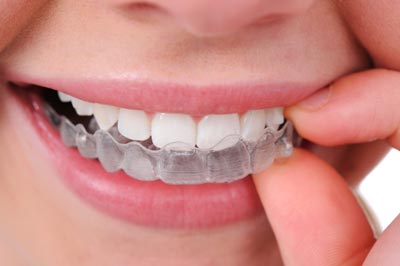
4. Painless Dental Implants to replace the missing teeth.
Implant surgery involves replacing tooth roots with TITANIUM metal posts and replacing damaged or missing teeth with artificial ones that look and function like natural teeth. A dental implant is an excellent alternative to dentures or bridgework that doesn’t fit well and a great alternative when the natural roots of the teeth have been lost.
There are Various Types of Dental Implants Like
- Single-Tooth Implants
An implant is surgically placed in an opening that your dentist makes in the jawbone. A crown (cap), made to look like a natural tooth, is attached to the implant and fills the space left in the mouth by the missing tooth. After the implant integrates (attaches) to your bone, it acts as a new “root” for the crown that will be replacing your missing tooth. For this procedure to work, there must be enough bone in the jaw, and the bone has to be strong enough to hold and support the implant. If there is not enough bone, the bone may need to be added with bone augmentation. In addition, natural teeth and supporting tissues near where the implant will be placed must be in good health.
- All on 4
Generally, tooth loss is accompanied by the loss of the jaw bone and pneumatization of the sinuses. The All-on-4 dental implants are done in complete Edentulous or complete tooth loss cases, based on four titanium implants that address the loss of tooth or jaw bone drawbacks. These implants act as “pillars” which take the support of the existing bone.
- All-on-6 or 8
This kind of implant is for those blessed with a good jaw bone, where six to eight implants are placed in a completely teeth-less jaw. Thus, it provides secure and optimal support for a fixed bridge. This implant is considered the most comprehensive, successful, safe, and simpler implant supported by fixed teeth protocol for completely missing teeth.Such treatment will give more strength and anchorage, preventing further bone loss and give us a chance to give zirconia or PFM crown which lasts a lifetime.
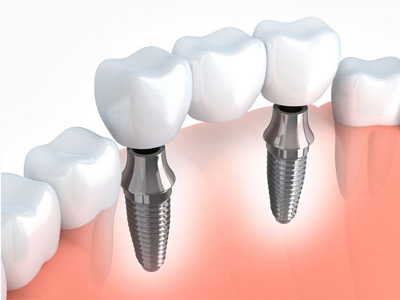
5. Maxillo facial surgeries for trauma, clefts, fractures & other birth anomalies on face.
6. Cyst removal from the jaws.
7. Root Canal Treatments (RCTs).
Root Canal Treatment (RCT) is performed on a decayed tooth’s pulp area for protecting the tooth from further decay. It is recommended that you get a dental crown or cap after root canal treatment. The options available are laser-assisted root canal, microscopic root canal and single visit root canal.
Symptoms of a Root Canal Problem
- Severe tooth pain, sensitivity to hot & cold temperatures
- Tooth becomes discolored
- Swollen, tender gums
- A recurring abscess that forms on the gums
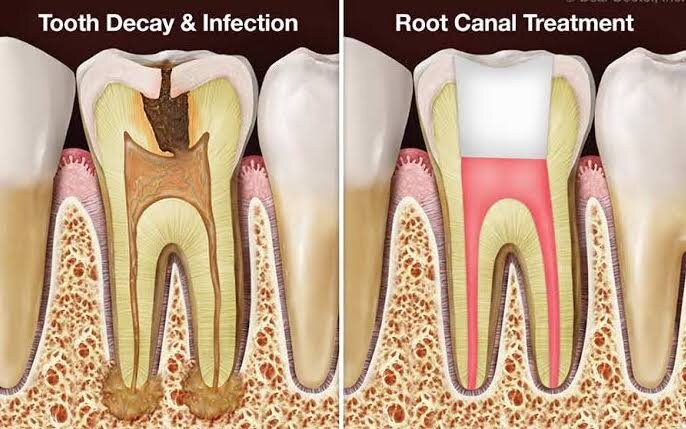
8. Flap surgeries through bone augmentation.
Gum disease also known as periodontal disease, varies from simple gum inflammation to a more destructive disease which can eventually result in tooth loss. One of the main causes of gum disease is a build-up of bacteria on teeth and around the gums. If these bacteria aren’t removed by a regular oral care routine of brushing and flossing, they can cause gum inflammation (gingivitis). Left untreated, it can progress to periodontitis, eventually lead to tooth loss and other health problems which is more serious.
In some patients, gum infection can break down the bone, resulting in bony defects which weaken the tooth. In such scenarios, regeneration with biocompatible materials like bone grafts, membranes, growth mediators to help body regrow lost bone and increase life of tooth.
Our periodontists can also help engineer an esthetic gingival display correcting any defects in position, margins, colour and thickness, restoring harmony to your facial esthetics. These include a variety of procedures like gum depigmentation, closure of black triangles, root coverage procedures, correction of enlarged gums and many more.
9. LASERs for Gum diseases, de-pigmentation, teeth whitening, Root Canal Treatments.
Laser therapy is a medical treatment that uses a strong beam of light to cut, burn, or destroy tissue. Laser beams can be focused to a very small point, giving them a high power density. Also, laser has a property of causing surface decontamination by destroying the microbes which maintains sterile operative field which is not possible by conventional treatments. Hence LASER is used in all types of dental procedures.
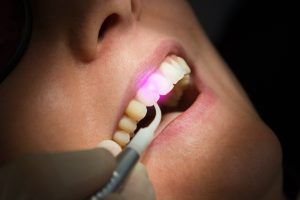
10. Painless and Atraumatic Tooth Extraction.
An atraumatic extraction is a tooth extraction technique used to remove the damaged teeth using specialized tools while causing minimal damage or trauma to the surrounding bone and tissues. It’s maybe best defined as minimally INVASIVE , which will appeal to anyone dealing with tooth loss.
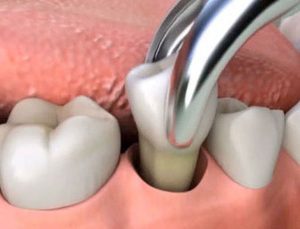
11. Periodontal treatments for loosened teeth, splinting.
Splinting is a procedure where a group of teeth is bound together so the load of biting, chewing, etc. can be evenly distributed, till the affected teeth can strengthen at the base and support themselves. With reduced mobility, the stabilized tooth gets a chance to recover, so you get much-needed relief from pain and discomfort. However, this will not treat any gum disease (which would’ve caused the teeth to become loose in the first place). Maintaining a high level of oral hygiene is advised.
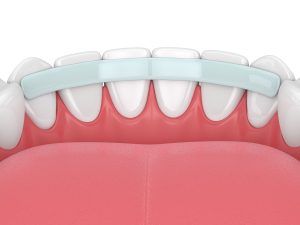
12. All Kids Dental Treatments by special Pediatric Dentist.
Kids Dentist or Pediatric Dentist, trained to take care of dental complexities of kids and teens. Pediatric dentistry is a separate field dedicated to kids, their Oral Health prevention and preparation for the future.
Pediatric Dentist, work towards maintaining good oral health in kids. The treatment provided by them includes:
- Examination of infants and teens. It includes the oral caries assessment in mothers and their kids
- They are an expert is protecting your kids’ teeth by doing a fluoride treatment
- Habit counseling in which the doctors help to keep the habits of kids in control
- Correction of crooked and misaligned teeth
- Treatment of tooth cavities
- Treatment of dental injuries
